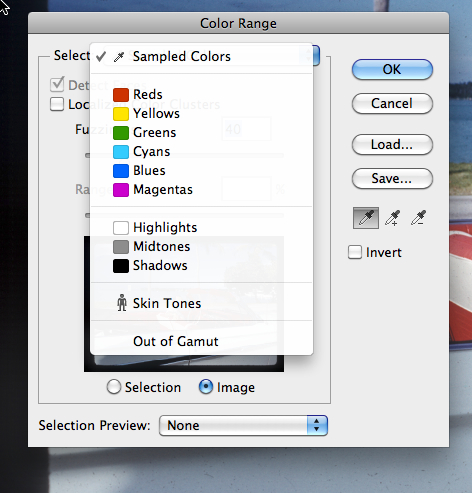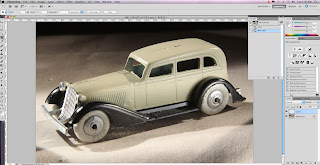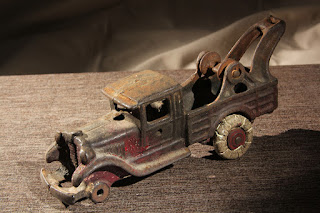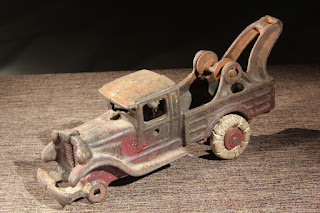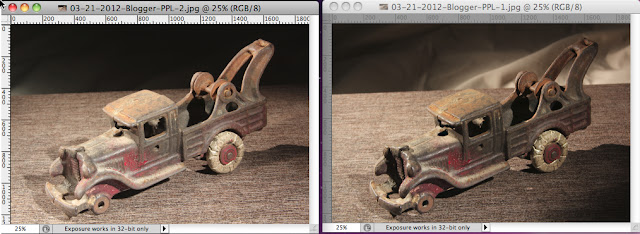Thursday, March 29, 2012
Photoshop-Correcting Distortion
One of the most useful functions or menus in Photoshop is the ability to correct distortion. Distortion is the effect or result of how a lens "records an image. A wide-angle lens will make items close to the lens larger than reality, and reduce the in the back smaller than reality. The same is also done with the human eye. If you look at a long road or set of railway tracks, you will notice that the tracks close to you are very wide, while about a mile away they're tiny and seem to merge.
Creative photography doesn't care about distortion, but manufacturers of products, or architects of buildings certainly want their product s or buildings to be perfect in their shape. Before digital photography and Photoshop, the view camera (4" x 5" or 100mm x 125mm) was used to correct distortion. Also, longer focal length lenses cause you to be farther away. The farther distance creates less distortion. In this case, I'm talking about left to right or top to bottom, when the product is not flt to the camera, but is at an angle.
The can of paint thinner below, will help me to explain what I'm talking about. As well, I'll explain how you can correct any distortion there is in a building or product. I was using that can to talk about several small toys that I am restoring and that I'm talking about in my other blog on old toys.
If you look at the can above, you will notice 2 things:
1. The can is tilted to the right
2. The can is distorted. It is bigger (wider) at the top than at the bottom.
1We can see that with our eyes, but Photoshop has something called a "grid".
A grid is simply a set of vertical and horizontal lines that cross each other.
By doing View>>Show>>Grid,
The gir\\rid will appear.
You can make the grid squares larger or smaller, and you can change the colour of the lines.
In order to correct the tilt, I have to do 2 things:
1. Select all
Once I do Select >> All
4 small squares will appear at the 4 corners of the photo.
Any of these 4 points can be pulled inwards or outwards, or up or down.
I will then command Photoshop to:
Edit >> Transform >> Rotate
A Small arc-shaped arrow (at 2 ends) will appear.
I placed my cursor on the upper right or left square, press the mouse down, and then move the entire image to the left.
I pulled the upper left corner square to the left.
This allowed me to straighten the can so that it wasn't tilted anymore.
Notice how the can is now parallel with the mauve (purple) line that I drew.
Notice also, that as I tilted the can to the left (yellow arrow and # 1), the area of the photo moved out of its frame. This can be corrected later.
I still have to correct the top to bottom distortion.
The top is wider than the bottom because of the camera's angle and viewpoint (looking up) to the can.
Notice how the can is wider at the top than at the bottom.
IWhat I 'll do is:
Edit >> Transform >>Distort
Doing Edit >> Transform >> Distort
provides me with those 4 small squares at the 4 corners of the photo.
I'll place the mouse on the lower left square and pull or push to the left. This will cause the can to get larger at the bottom. I'll pull it enough to be able to see that the top and bottom are now equal in size. I can then tape a measuring tape or ruler, and measure the image dimensions carefully on the screen.
The Coirected Shape of the Can ofLacquer Thinner.
Notice that I am missing some photo portions on the upper right, and lower part of the photo.
This was due to the corrections that I made on the photo.
DI can then use the "rubber stamp"
By clicking fiorst, I cantake a sample of what I want to copy, and then paste it in the area that has been lost in the photo.
Before After
Thanks for visiting, and as always,
have a good morning, afternoon, or evening,
wherever you may be.






























